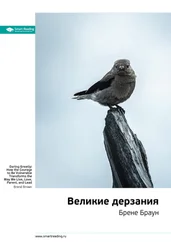To Steve, Ellen, and Charlie: Y’all make everything possible. I don’t know how I got so lucky. I love you.
Notes and References
INTRODUCTION
… developing a theory:
Brown, Brené. (2009). Connections: A 12-session psychoeducational shame-resilience curriculum. Center City, MN: Hazelden.
Brown, Brené. (2007). I Thought It Was Just Me (But It Isn’t): Telling the Truth About Perfectionism, Inadequacy, and Power. New York: Penguin/Gotham Books.
Brown, Brené. (2007). Shame resilience theory. In Susan P. Robbins, Pranab Chatterjee, and Edward R. Canda (Eds.), Contemporary human behavior theory: A critical perspective for social work, rev. ed. Boston: Allyn and Bacon.
Brown, Brené. (2006). Shame resilience theory: A grounded theory study on women and shame. Families in Society, 87, 1: 43–52.
The Gifts of Imperfection : Brown, B. (2010). The gifts of imperfection: Letting go of who we think we should be and embracing who we are. Center City, MN: Hazelden.
… in my dissertation: Brown, C.B. (2002). Acompañar: A grounded theory of developing, maintaining and assessing relevance in professional helping. Dissertation Abstracts International, 63(02). (UMI No. 3041999).
TEDxHouston
… the main TED website
… the main TED conference in Long Beach, CA.
CHAPTER 1
SCARCITY: LOOKING INSIDE OUR CULTURE OF “NEVER ENOUGH”
Recently a group of researchers conducted a computer analysis: DeWall, C. Nathan; Pond Jr., Richard S.; Campbell, W. Keith; Twenge, J. (2011). Tuning in to psychological change: Linguistic markers of psychological traits and emotions over time in popular US song lyrics. Psychology of Aesthetics, Creativity, and the Arts 5, 3: 200–207.
The Narcissism Epidemic : Twenge, J., and Campbell, K. (2009). The narcissism epidemic: Living in the age of entitlement. New York: Simon and Schuster.
The Soul of Money : Twist, L. (2003). The soul of money: Transforming your relationship with money and life (New York: W. W. Norton and Company), p. 44.
The word scarce : Merriam-Webster. Retrieved January 2012. http://www.merriam-webster.com/dictionary/
CHAPTER 2
DEBUNKING THE VULNERABILITY MYTHS
From the field of health psychology: Aiken, L., Gerend, M., and Jackson, K. (2001). Subjective risk and health protective behavior: Cancer screening and cancer prevention. In A. Baum, T. Revenson, and J. Singer (Eds.), Handbook of health psychology, pp. 727–746. Mahwah, NJ: Erlbaum.
Apanovitch, A., Salovey, P., and Merson, M. (1998). The Yale-MTV study of attitudes of American youth. Manuscript in preparation.
From the field of social psychology: Sagarin, B., Cialdini, R., Rice, W., and Serna, S. (2002). Dispelling the illusion of invulnerability: The motivations and mechanisms of resistance to persuasion. Journal of Personality and Social Psychology, 83, 3: 536–541.
The Science of Trust : Gottman, J. (2011). The science of trust: Emotional attunement for couples. New York: W. W. Norton & Company.
… the University of California–Berkeley’s “Greater Good”: John Gottman on Trust and Betrayal. October 28, 2011. Retrieved February 2012. http://greatergood.berkeley.edu/article/item/john_gottman_on_trust_and_betrayal/ (www.greatergood.berkeley.edu)
There’s actually some very persuasive leadership research: Fuda, P., and Badham, R. (2011). Fire, snowball, mask, movie: How leaders spark and sustain change. Harvard Business Review. http://hbr.org/2011/11/fire-snowball-mask-movie-how-leaders-spark-and-sustain-change/ar/1
CHAPTER 3
UNDERSTANDING AND COMBATING SHAME (AKA GREMLIN NINJA WARRIOR TRAINING)
In a 2011 study: Kross, E., Berman, M., Mischel, W., Smith, E. E., & Wager, T. (2011). Social rejection shares somatosensory representations with physical pain. Proceedings of the National Academy of Sciences, 108, 15: 6270–6275.
The majority of shame researchers: For the most comprehensive review of the shame and guilt literature see Shame and Guilt by June Price Tangney and Ronda L. Dearing (New York: Guilford Press, 2002).
Additionally, I recommend this edited volume: Shame in the Therapy Hour edited by Ronda Dearing and June Tangney (American Psychological Association, 2011).
Shame is highly correlated, and Researchers don’t find … : The following books and articles explore the relationships between shame and various outcomes:
Balcom, D., Lee, R., and Tager, J. (1995). The systematic treatment of shame in couples. Journal of Marital and Family Therapy, 21: 55–65.
Brown, B. (2007). I thought it was just me: Women reclaiming power in a culture of shame. New York: Gotham.
Brown, B (2006). Shame resilience theory: A Grounded theory study on women and shame. Families in Society, 87, 1: 43–52.
Dearing, R., and Tangney, J. (Eds). (2011). Shame in the therapy hour. American Psychological Association.
Dearing, R., Stuewig, J., and Tangney, J. (2005). On the importance of distinguishing shame from guilt: Relations to problematic alcohol and drug use. Addictive Behaviors, 30: 1392–1404.
Ferguson, T. J., Eyre, H. L., and Ashbaker, M. (2000). Unwanted identities: A key variable in shame-anger links and gender differences in shame. Sex Roles, 42: 133–157.
Hartling, L., Rosen, W., Walker, M., and Jordan, J. (2000). Shame and humiliation: From isolation to relational transformation (Work in Progress No. 88). Wellesley, MA: The Stone Center, Wellesley College.
Jordan, J. (1989). Relational development: Therapeutic implications of empathy and shame (Work in Progress No. 39). Wellesley, MA: The Stone Center, Wellesley College.
Lester, D. (1997). The role of shame in suicide. Suicide and Life-Threatening Behavior, 27: 352–361.
Lewis, H. B. (1971). Shame and guilt in neurosis. New York: International Universities Press.
Mason, M. (1991). Women and shame: Kin and culture. In C. Bepko (ed.), Feminism and addiction, pp. 175–194. Binghamton, NY: Haworth.
Nathanson, D. (1997). Affect theory and the compass of shame. In M. Lansky and A. Morrison (Eds.), The widening scope of shame. Hillsdale, NJ: Analytic.
Sabatino, C. (1999). Men facing their vulnerabilities: Group processes for men who have sexually offended. Journal of Men’s Studies, 8: 83–90.
Scheff, T. (2000). Shame and the social bond: A sociological theory. Sociological Theory, 18: 84–99.
Scheff, T. (2003). Shame in self and society. Symbolic Interaction, 26: 239–262.
Stuewig, J., Tangney, J. P., Mashek, D., Forkner, P., and Dearing, R. (2009). The moral emotions, alcohol dependence, and HIV risk behavior in an incarcerated sample. Substance Use and Misuse, 44 : 449–471.
Talbot, N. (1995). Unearthing shame is the supervisory experience. American Journal of Psychotherapy, 49: 338–349.
Tangney, J. P., Stuewig, J., and Hafez, L. (in press). Shame, guilt and remorse: Implications for offender populations. Journal of Forensic Psychiatry & Psychology.
Tangney, J. P., Stuewig, J., Mashek, D., and Hastings, M. (2011). Assessing jail inmates’ proneness to shame and guilt: Feeling bad about the behavior or the self? Criminal Justice and Behavior, 38: 710–734 .
Tangney, J. P. (1992). Situational determinants of shame and guilt in young adulthood. Personality and Social Psychology Bulletin, 18: 199–206.
Tangney, J. P., and Dearing, R. (2002). Shame and guilt. New York: Guilford.
Humiliation is another word: Klein, D. C. (1991). The humiliation dynamic. An overview. The Journal of Primary Prevention , 12, 2: 93–122.
Читать дальше






![Брене Браун - Вопреки. Как оставаться собой, когда всё против тебя [litres]](/books/436389/brene-braun-vopreki-kak-ostavatsya-soboj-kogda-v-thumb.webp)





